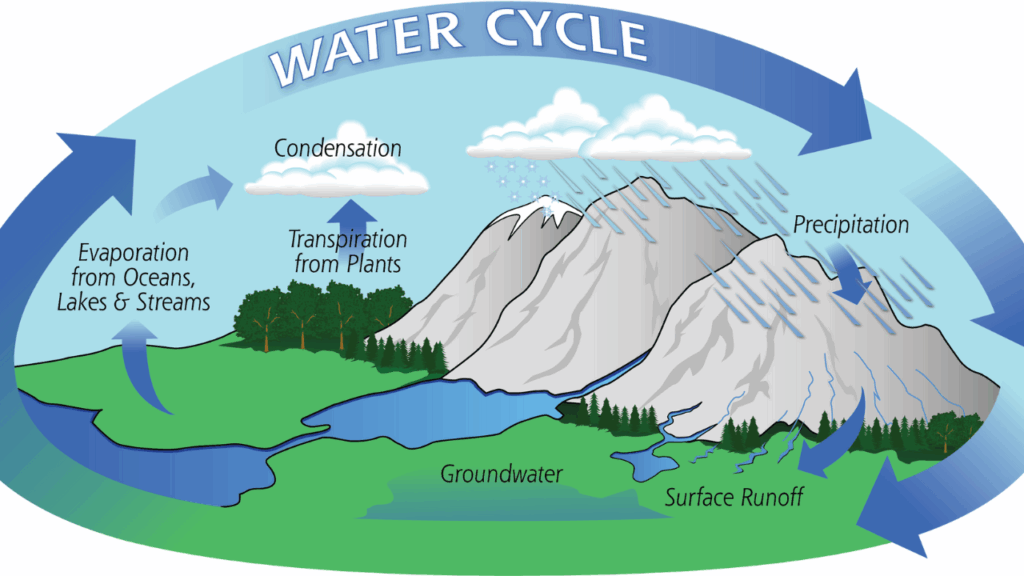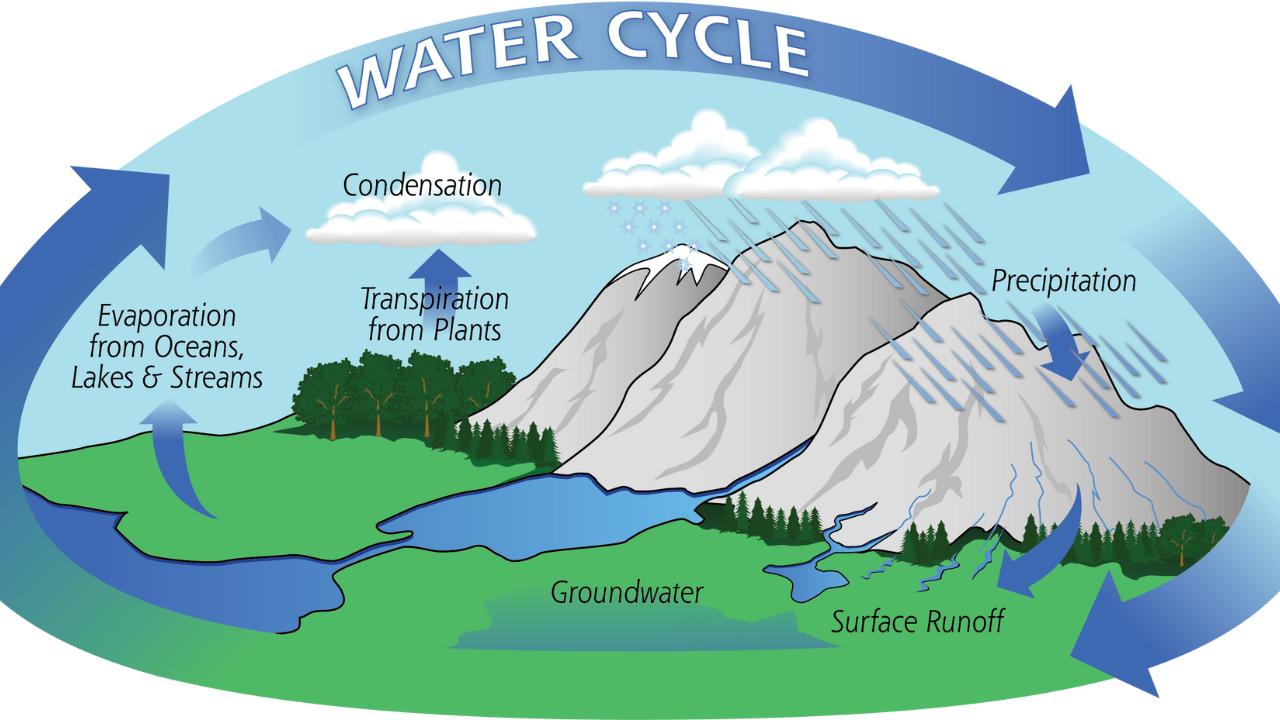
Forests are often called the lungs of the Earth, but they are just as vital for the planet’s water cycle as they are for oxygen. Trees play a key role in rainfall generation, groundwater recharge, and maintaining stable climates. When forests are destroyed, the ripple effects on the water cycle are enormous—impacting agriculture, weather patterns, and even the availability of drinking water.
Understanding how deforestation disrupts the global water cycle is crucial if we want to secure water for future generations.
The Link Between Forests and the Water Cycle
Forests act like giant water pumps. Through evapotranspiration—a process where trees release water vapor into the air—forests contribute to cloud formation and rainfall. They also stabilize soil, protect watersheds, and regulate the flow of rivers and streams.
When trees are cut down, the balance is broken. This leads to less rainfall, increased droughts, and disturbed ecosystems that depend on steady water supplies.
Major Ways Deforestation Disrupts the Water Cycle
1. Reduced Rainfall
Trees recycle moisture back into the atmosphere. Without them, regions experience less rainfall and prolonged dry seasons. For example, the Amazon rainforest contributes to rainfall across South America—its deforestation directly affects agriculture thousands of miles away.
2. Altered River Flows
Tree roots absorb and slowly release water into rivers and streams. Removing forests leads to erratic river flows, causing floods during rainy seasons and dry riverbeds during droughts.
3. Loss of Groundwater Recharge
Forests allow rainwater to seep into the soil, replenishing underground aquifers. Deforested lands often become compacted and dry, preventing water from soaking in and reducing groundwater reserves.
4. Increased Flooding
Without trees to stabilize the soil, rainfall runs off quickly, overwhelming rivers and cities. This not only causes flooding but also washes away fertile soil needed for crops.
5. Changes in Climate and Weather Patterns
Forests are climate regulators. Large-scale deforestation can alter wind patterns and shift rainfall zones, causing droughts in some areas and storms in others.
The Global Consequences
The water cycle is interconnected, meaning deforestation in one part of the world can influence weather in another. For example:
- Deforestation in the Amazon reduces rainfall in surrounding countries.
- Loss of forests in Africa impacts rainfall crucial for food production.
- Global shifts in rainfall patterns affect water availability for billions of people.
Table: Effects of Deforestation on the Water Cycle
| Impact Area | Effect on Water Cycle | Consequence |
|---|---|---|
| Rainfall | Less evapotranspiration | Reduced precipitation, droughts |
| Rivers & Streams | Disrupted flow | Flooding in wet season, drying in dry |
| Groundwater Recharge | Less infiltration | Decline in aquifers and wells |
| Soil Stability | Erosion and runoff | Loss of fertile land, silted rivers |
| Regional & Global Climate | Altered rainfall patterns | Droughts, unpredictable storms |
| Agriculture & Food Security | Lack of water for crops | Food shortages, rising costs |
Broader Environmental and Human Impacts
- Agriculture: Crops suffer from reduced rainfall and unreliable irrigation.
- Biodiversity: Aquatic species and land animals lose stable water habitats.
- Human Settlements: Communities face frequent floods and water scarcity.
- Global Economy: Industries relying on water—farming, energy, and textiles—face disruption.
- Public Health: Waterborne diseases increase when floods contaminate drinking water.
How We Can Mitigate the Impact
- Reforestation & Afforestation: Planting trees helps restore water cycles.
- Sustainable Agriculture: Preventing slash-and-burn practices reduces deforestation.
- Watershed Protection: Protecting riverbanks and wetlands maintains natural water flows.
- Global Action: International cooperation is needed, since the effects of deforestation cross borders.
Overview Table
| Deforestation Effect | Water Cycle Impact | Long-Term Risk |
|---|---|---|
| Tree loss reduces rainfall | Less evapotranspiration | Droughts, desertification |
| Soil erosion increases | More runoff, less absorption | Fertile land loss, reduced crops |
| Rivers become unstable | Erratic flow | Floods, dry spells |
| Groundwater recharge drops | Aquifer decline | Water scarcity for communities |
| Climate shifts regionally | Rainfall redistribution | Extreme weather, food insecurity |
| Global rainfall disruption | Shifts in precipitation zones | International water crises |
Final Thoughts
Deforestation is more than a loss of trees—it’s a direct attack on the Earth’s water cycle. Without forests, rainfall patterns collapse, rivers dry up or flood, and groundwater reserves shrink. These changes don’t just affect ecosystems—they threaten human survival, food production, and global stability.
Protecting and restoring forests is one of the most effective strategies for safeguarding the world’s most precious resource: water.
FAQs
Q1: How does deforestation affect rainfall?
Trees release water vapor that helps form clouds. Without them, rainfall decreases significantly.
Q2: Can deforestation cause floods?
Yes, because tree roots absorb and slow down water. Without them, rainfall runs off quickly, causing floods.
Q3: Is reforestation enough to restore the water cycle?
Reforestation helps, but it takes decades to restore ecosystems. Prevention is more effective than repair.

